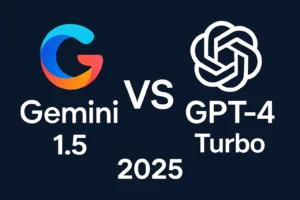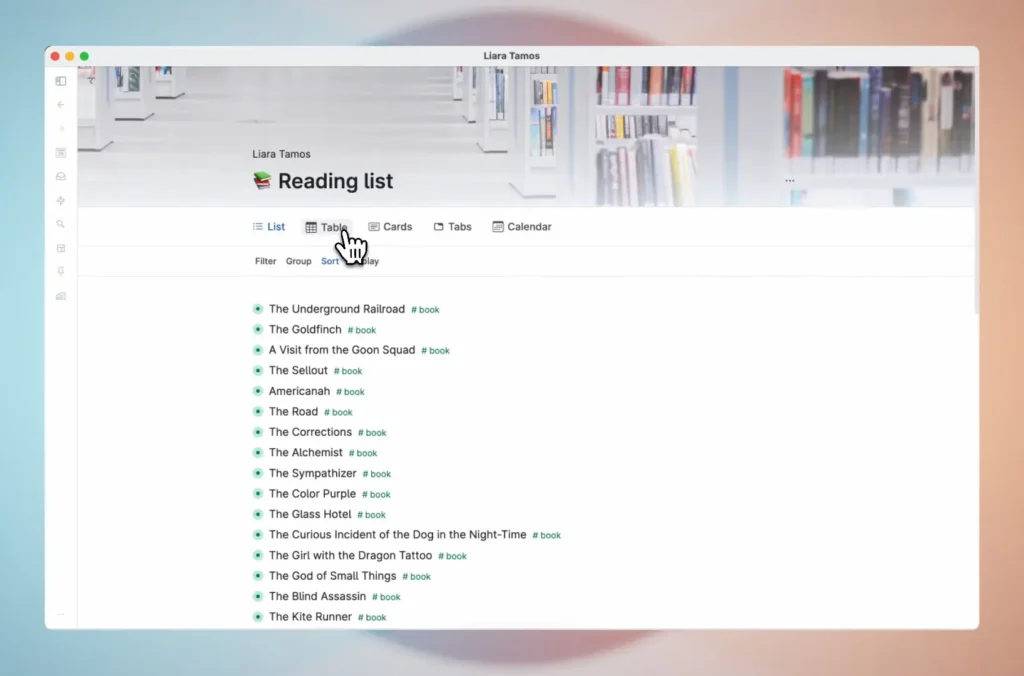
Gemini 1.5 vs. GPT-4 Turbo — Which AI Reigns Supreme in 2025?
Google’s Gemini 1.5 and OpenAI’s GPT-4 Turbo are shaping the future of AI. Here’s how they compare in reasoning, memory, code, and creativity.
Top 10 Trending Tags
Recent Posts
in All Categories

Google’s Gemini 1.5 and OpenAI’s GPT-4 Turbo are shaping the future of AI. Here’s how they compare in reasoning, memory, code, and creativity.

The Lenovo Yoga Pro 9i Gen 8 combines RTX 4070 graphics, a brilliant Mini LED display, and AI-powered performance — perfect for creators and professionals on the move.

📌
Tana AI is an advanced note-taking and productivity platform that combines structured knowledge management with AI-powered features. Built for creators, researchers, and deep thinkers, it helps you organize ideas, automate workflows, and accelerate writing — all within one intelligent workspace.
🗂️ Category: Tech News
According to Tana’s official blog, the platform is evolving toward a fully AI-augmented productivity workspace. Tana AI is shaking up the productivity space with an AI-first approach to knowledge management. More than just a note-taking app, Tana introduces semantic structures, task automation, and customizable workflows — all built into a powerful, integrated interface. It’s designed for deep thinkers, researchers, and creators who want their tools to work as fast as their ideas.
“Tana redefines what it means to take notes — it thinks with you, not just for you.”
“We believe in supporting a diverse range of AI models — Grok could be a valuable addition to Azure.”
AI-Powered SuperTags: Classify and organize content using dynamic tagging that learns and evolves with your usage.
Daily Notes & Calendar Views: Combine structured journaling with long-term planning — perfect for PKM (Personal Knowledge Management).
Powerful Search & Query System: Tana’s built-in search works like a database. You can filter, group, and analyze your notes like you would a spreadsheet or Notion database — but faster.
Integrated AI Assistants: Write summaries, auto-fill references, or brainstorm ideas with a tap — powered by OpenAI’s LLM backend.
Cross-Platform Sync: Seamless real-time sync across mobile, tablet, and desktop, keeping your graph in the cloud.

Image Source: Tana Official Website — Screenshot of Tana’s AI-powered productivity interface, highlighting features like Supertags, nodes, and the outline editor.
Tana excels in situations where structure emerges as you work — from academic research and content creation to meeting notes and CRM systems. Power users often describe it as “Roam meets Notion meets ChatGPT.”
Its AI tools are particularly useful for:
Automatically summarizing long-form notes
Extracting action items
Enriching nodes with context-aware suggestions
“I moved my entire Notion system to Tana in a weekend. It’s that intuitive and fast.”
Semantic notes feel like a brain extension
AI Assistant helps summarize, tag, and generate content
Designed for structured thinking and idea linking
Excellent for meeting notes, project outlines, and personal knowledge graphs
Fast search and clean UX that rivals Notion and Obsidian
Supertags and AI commands make organizing notes feel effortless
Combines note-taking, task management, and knowledge graphs in one workspace
Ideal for researchers, creators, and productivity-focused teams
AI autofill and command bar enhance workflows without being overwhelming
Strong focus on structured thinking and interconnected content
Sleek, modern interface that feels fast and customizable
Steep learning curve for new users unfamiliar with graph-style organization
No offline mode (as of 2025) — requires internet
Team features are still in beta and not ideal for large-scale collaboration yet
| Category | Score |
|---|---|
| Knowledge Management | 9.4 |
| Workflow Automation | 9.1 |
| Ease of Use | 8.6 |
| AI Features | 8.2 |
| Team Collaboration | 8.5 |
User Experience
Tana’s interface feels modern and fast, with minimal lag even during large-scale knowledge input. The command bar is intuitive for power users, while beginners may need time to adjust.
AI SuperTagging Performance
The AI tagging is one of Tana’s standout features. It correctly identifies context and categorizes notes with minimal manual input — significantly reducing cognitive load during brainstorming.
Daily Workflow Integration
With features like task views, calendar integration, and offline sync, Tana adapts well to structured and creative workflows alike. The journal-like flow helps users capture thought processes naturally.
Collaboration Potential
While real-time editing is still developing, multi-user support shows promise. Teams can build shared knowledge structures, making it a viable contender for Obsidian or Notion teams.
Tana AI stands out as a powerful hybrid of note-taking and structured knowledge management, ideal for creators, thinkers, and teams that value control and flexibility. Its AI-first design, smart tagging, and customizable workflows offer a fresh take on productivity tools.
While it’s still maturing—especially in mobile features and export flexibility—it already delivers impressive utility for those willing to explore its layered features. If you’re looking for a tool that adapts to how you think, Tana is a strong contender in the next generation of productivity platforms.
👀 Also See
Tana offers a free plan with basic features. Advanced AI tools and automation features are available on paid tiers.
While Notion AI enhances note-taking and writing, Tana focuses on dynamic workflows and real-time knowledge graphs with strong AI-assisted organization.
Yes, Tana supports integrations and API access for connecting with productivity tools, though full functionality may depend on your subscription level.